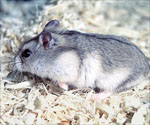


Owning a... hamster
Start here
Before buying a hamster, remember that it is your responsibility to care for it every day of its life, which may be for up to 5 years.
Origins
In the 1900's, everyone believed that hamsters were extinct. In April 1930, however, a scientist called Doctor Israel Aharoni unearthed a female hamster and her litter of 12 young whilst on an archaelogical dig in Aleppo, near Syria. The young were removed from the nest and taken to the Hebrew University at Jerusalem. Breeding was difficult at first and only one male and two females complied. All present-day Syrian hamsters are descended from these 3 animals. Once the breeding stock reached high enough levels, the hamsters were distibuted around the world, where they continued to breed. The first hamsters to reach the UK belonged to Dr Edward Hindle, and it was from his stock that the country first obtained their pets.
Breeds
Syrian Hamster: (bottom left). The most common breed kept as a pet. They are named after the family of hamsters found in Syria, but are sometimes called the 'golden hamster' due to the colour of their fur. These hamsters are covered in soft fur which ranges in colour from tawny brown to mahogany red, with black guard hairs. Many other varieties exist. The tummy and chin are pure white, with white bands on each side of the face (the crescent) bordered by a thin black line (the cheek flash). Syrian hamsters are thought to be short-sighted, although this hasn't been proved 100%. These hamsters should be kept alone, NEVER in pairs since they will fight.
Russian Dwarf Hamster: (below right). These are dwarf hamsters, measuring around 8cm in length. They are often grey in colour, with a white tummy. They have very thick fur and even have furry feet! These hamsters should be kept in pairs.
Chinese Dwarf Hamster: This is one of the smallest of the hamsters, only reaching a length of 7.5cm. It is greyish-brown in colour with a dark dorsal stripe down the length of the spine. It has a white chin and tummy. Chinese hamsters are not often found in pet shops although they do make good pets.


Choosing your hamster
When buying a hamster, you need to decide whether you would like a Syrian hamster or a pair of Russian hamsters. This section deals only with Syrian hamsters but Russian hamsters are very similar.
When choosing a hamster, look for the following things:-
1. A clean nose free from mucous;
2. Clean, bright eyes with no discharge;
3. Straight teeth which are not visible when the mouth is closed;
4. Clean ears, covered with hair. Check for any discharge;
5. A smooth, shiny coat. Check for wounds or scabs;
6. A clean bottom, with no staining under the tail (this indicates diarrhoea).
Male or female?
There isn't much difference between the sexes, although males are slightly larger than females.
How old?
You should get your hamster when it is 6 - 8 weeks old. At this age it is independent of its mother and will be easily tamed.
Where should I get my hamster from?
It is best to get a hamster from a reputable pet shop. They are sometimes available from rescue centres, but if you get a rescue hamster you cannot know their age or history - if they are over 1 year old and not tamed, you will have a hard time trying to handle them, and they may never become fully tame.
Site design and content © Charlotte Owen 2003